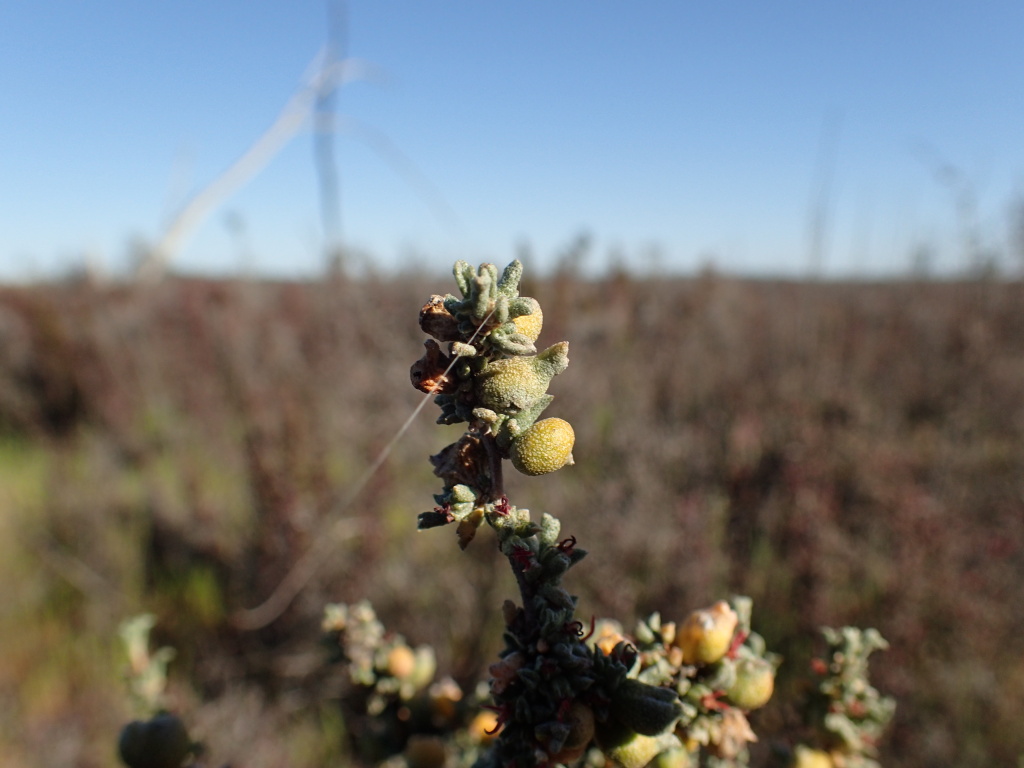Lawrencia squamata
Nees Thorny LawrenciaDivaricate, often spinescent dioecious shrub to c. 60 cm high. Leaves fascicled, sessile, linear to narrow-obovate, 1–5(–10) mm long, thickish, entire or sometimes 3-toothed at apex, surfaces appearing greyish from a layer of minute fringed peltate scales. Flowers unisexual, sessile, solitary, axillary; male flowers with calyx hemispherical 2–3 mm long, with 5 very short, rounded lobes, broadly 5-angled; petals c. obovate, exceeding sepals by up to 3 mm, free from midway or below, white or yellow, sometimes reddish-tinged; anthers 1–20; female flowers with calyx subcylindric, 2–3 mm long, barely exceeded by petals; staminodes sometimes present; styles (4–)5. Fruit ovoid, c. 3 mm long; only 1 mericarp maturing a seed; pericarp thinly membranous, closely surrounding the plump, asymmetrically ovoid seed, c. 2 mm long. Flowers Sep.–Nov.
LoM, MuM, Wim, VVP, VRiv, MSB, MuF, OtP, DunT. Also WA, NT, SA, Qld, NSW, Tas (doubtfully naturalised). Occasional on clay soils (often gypsum-rich) fringing salt lakes and saline depressions of far north-western Victoria, with southerly outliers from near Natimuk to Lake Paracemalac near Lake Bolac township, Lake Murdeduke, and Point Lonsdale.
Walsh, N.G. (1996). Lawrencia. In: Walsh, N.G.; Entwisle, T.J., Flora of Victoria Vol. 3, Dicotyledons Winteraceae to Myrtaceae, pp. 352–355. Inkata Press, Melbourne.
 Spinning
Spinning


